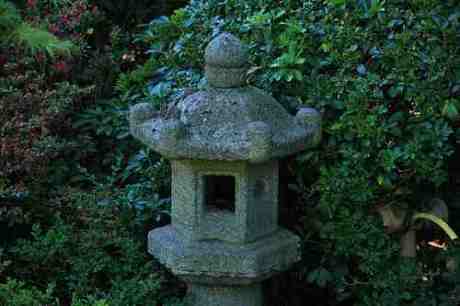London Hotels Insight provides up-to-date, independent advice for your perfect stay in London. We research guest feedback, meet management and identify hotels at the top of their game.
A secret Japanese garden for all seasons.

The Kyoto Garden in Holland Park offers a beautiful sanctuary...if you can find it! (Image credit below)
The seasons will change this month and London will once again change its clothes. Every square and tree-lined street will start to bloom and the parks will begin to light up with colour – but nowhere is lovelier to enjoy the onset of fairer weather than the Kyoto Garden in Holland Park.
Unless you knew it was here, you’d probably pass it by.
Holland Park itself is well-hidden; unlike Hyde Park and Kensington Gardens just up the road, it’s tucked away behind the Commonwealth Institute and reached by a narrow lane. Even within the park, the garden is concealed: it’s behind the stables and the rose garden and the rather municipal-looking playground, among high trees and behind a stout wooden fence.
As soon as you enter the garden, you know it’s a little bit different. There’s a shimmer from one tall tree which shades the dark pond. Grey boulders adorn the shore. There are the leaves of a Japanese maple tree, a low branch just touching the water. And the shadowy pale bodies of koi carp seen dimly in the water. And the gentle music of a waterfall.
The Japanese garden isn’t an ancient construction, even though it feels ages old; it was created in 1991 and refurbished nine years ago. It’s not big either; you can walk round the whole garden in about ten minutes.
This is not a park made for rushing around. It’s a park for sitting in; for dreaming or meditation. There’s no one place to see it from and it doesn’t set up a great vista. You have to move around, to taste it from different perspectives; or perhaps come back and choose a different place each day to sit and experience it.

The garden is a place for quiet reflection and meditation rather than for long walks (Image credit below)
It’s a park where you want to wait till the smallest things become significant – a breath of wind ruffling the water, a bird singing in a tree, a leaf falling on to the mirror surface of the pond.
When I was there last, a crowd of peahens suddenly invaded, preening themselves on the shore of the pond, a mist of grey feathers. The peacock followed, bright-eyed but somehow out of sympathy with the Zen qualities of the garden – too showy, too proud, too self-conscious (and too cowardly, I found out, as he took fright at a little grey squirrel and bristled up his glittering tail before running away!).
Japanese culture has always been keenly aware of the change of seasons, from cherry blossom viewing in spring to the glories of a snowy winter. If you wish to make a note on your calendar, autumn is when I find this garden at its best – full of colour and the poignant feeling of passing time. In late autumn you sense that the garden only has a couple of weeks left before all the leaves will have fallen and turned to rotting slush; and that prospect makes this delicate, impermanent beauty all the more moving.
This beauty is celebrated by the poet Basho; what better way to end a post on a Japanese garden’s seasons than by quoting one of his haiku?
in everyone’s mouth / the tongue of autumn’s / red leaves
Get the best-value London hotel deal from 30+ booking sites in 1 click
Photo credits: Bordas’ photostream, mariosp’s photostream.
Previous post: Eco-luxury with style and lots of space.
Next post: Top 10 films which use London as a backdrop.































{ 1 trackback }
{ 0 comments… add one now }